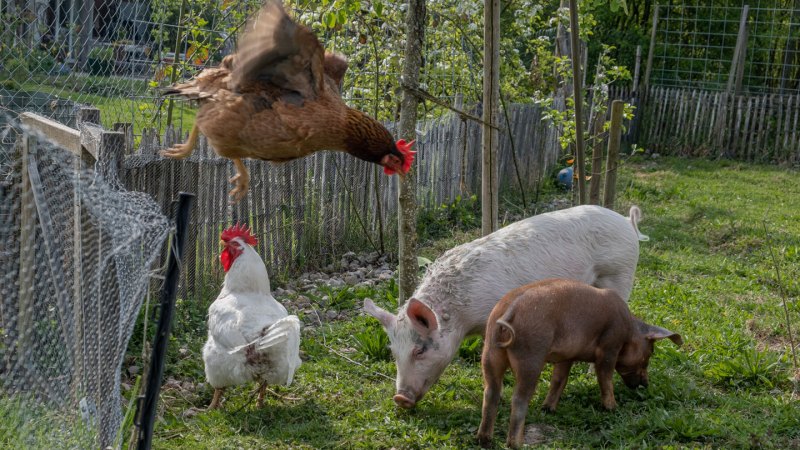
At least one pig has contracted bird flu amid an outbreak in poultry on a backyard farm in central Oregon.
While the infection seems limited to one farm so far, the discovery has raised new alarm bells thanks to pigs’ role as a sort of mixing pot for flu viruses, potentially leading to genetic mutations that could put humans at risk.
Here’s what we know so far about the case and the potential risks.
This is the first time a pig in the United States has been infected with this type of bird flu, called H5N1, the US Department of Agriculture announced on October 30. A necropsy on the pig, one of five at the farm, showed the animal had signs of the virus throughout its body, according to a news report from STAT. Two others had no signs of the virus and results for the remaining two pigs are still pending.
Other animals on the farm, including sheep and goats, are in quarantine to prevent further spread of the virus. Since none of the pigs were intended for commercial food, USDA officials are not concerned about the US pork supply. However, the news comes as H5N1 continues to spread among wild birds and mammals, and an outbreak in US dairy cows continues to grow.
Right now, there are more questions than answers about the case, including how the pig became infected and whether the virus poses a threat of a pig-to-pig spread on larger farms. But pigs pose a particular threat when it comes to the flu — one that raises concerns about how H5N1 could affect pigs, and humans, too.
The risk to humans comes from the long stay of pigs as a “mixing vessel” for influenza. Influenza viruses burst into cells by attaching to a sugar called sialic acid. Viruses from birds and humans typically bind to different types of these sialic acid receptors. As a result, bird flu is usually not good for infecting humans, and vice versa.
But pigs have receptors similar to birds and humans, making them susceptible to not only swine flu, but also viruses from birds and humans. If a bird virus and a human virus were to infect the same pig, this provides an opportunity for the viruses to exchange genes in a process called reassortment. This can help bird flu adapt in ways that make them better at infecting humans, with sometimes devastating consequences.
Pigs are the suspected source of the strain after the 1918 influenza pandemic (SN: 27/10/21). And the “swine flu” pandemic of 2009 started in pigs (SN: 22.5.09). A reshuffling event may also have occurred prior to the ongoing cattle outbreak (SN: 16.5.24).
Experts across the United States have been closely watching H5N1 since it began its sweep into the country in 2022. As mammals from wild foxes and marine mammals to dairy animals became ill, researchers looked for viral genetic material from samples of animals for mutations that may mean the virus is adapting to spread from mammal to mammal rather than to mammal from wild birds or poultry (SN: 3/6/23).
So far, some changes that help avian viruses multiply in human cells have appeared in viruses that circulate among animals, including sea lions and cattle, as well as a few isolated cases in farmers exposed to dairy cows. But a host of other changes must also occur for bird flu to break the species barrier and spread efficiently between humans. This list includes avoiding parts of our immune system and switching to using human sialic acid receptors instead of the avian versions to break into cells (there is inconclusive evidence as to whether this happened).
These traits can come together when influenza viruses exchange genes in pigs. Although H5N1 viruses have historically spread poorly among pigs, pigs are susceptible to at least some versions of H5N1 from the ongoing outbreak, researchers reported in April. Emerging infectious diseases.
For now, with only one pig on a farm having a confirmed infection, the threat of an outbreak in humans remains theoretical. But if H5N1 ever spreads to more pigs on larger farms, the risk of a human pandemic could be much more worrisome.
#finding #bird #flu #American #pig #time #raising #concerns
Image Source : www.sciencenews.org